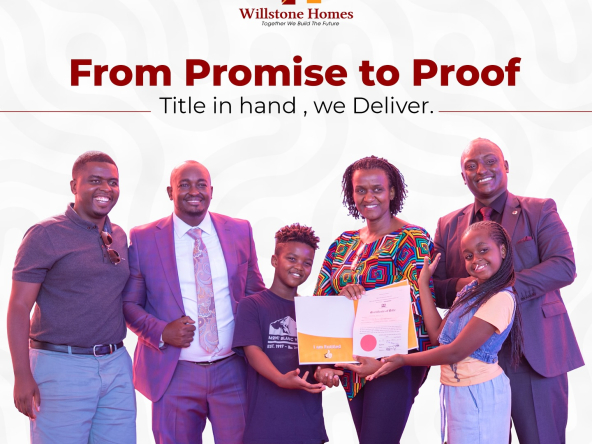What Is a Mortgage Rate Buydown?
A mortgage rate buydown is when the seller (often a developer in Kenya) pays money upfront to lower the buyer’s interest rate for the first few years of the mortgage.
Instead of reducing the property’s price, the developer partners with a bank to make monthly repayments more affordable at the start of the loan.
This is becoming more visible in Nairobi’s apartment market, especially in mid-range units priced between KES 8M – 18M, where developers compete for buyers.
Read Also: Say Goodbye to Rent Forever — Secure Your Legacy with Willstone Homes
How a 3-2-1 Buydown Works in Kenya
The most common structure internationally is the 3-2-1 buydown. Here’s how it works:
- Year 1: Your interest rate is lowered by 3%
- Year 2: Lowered by 2%
- Year 3: Lowered by 1%
- Year 4 onwards: Standard mortgage rate applies
The seller or developer pays the bank upfront to cover the difference in interest.
Example: Nairobi Apartment, KES 12M, 15% Mortgage Rate
Let’s compare a standard mortgage vs. a 3-2-1 buydown for a buyer in Nairobi.
Loan Amount: KES 10M (after 20% deposit)
Term: 20 years
Standard Rate: 15%
| Year | Standard Mortgage Payment | With 3-2-1 Buydown | Buyer Savings (per month) | Annual Savings |
|---|---|---|---|---|
| 1 | KES 131,000 | KES 102,500 (12% rate) | KES 28,500 | KES 342,000 |
| 2 | KES 131,000 | KES 114,300 (13% rate) | KES 16,700 | KES 200,400 |
| 3 | KES 131,000 | KES 123,400 (14% rate) | KES 7,600 | KES 91,200 |
| 4+ | KES 131,000 | KES 131,000 (15% rate) | — | — |
Total Savings in First 3 Years: ≈ KES 633,600
The developer pays this cost upfront to the bank, but the buyer benefits from lower monthly payments at the beginning of ownership.
Why Developers in Kenya Offer Buydowns
- Attract Buyers: Makes monthly payments look lighter without cutting property price.
- Protect Valuations: Keeps sale price intact for future appraisals and loans.
- Stand Out in Competitive Segments: Especially in Kilimani, Kileleshwa, and Westlands, where supply is high.
Read Also: Rent vs. Own in Nairobi Under Stress: What Really Holds Up?
Pros and Cons of Mortgage Rate Buydowns in Kenya
| Pros (For Buyers) | Cons (For Buyers) |
|---|---|
| Lower monthly payments in the first years | Payments jump after buydown period |
| Easier to qualify for mortgage affordability tests | Developer might build the cost into the sale price |
| Useful if planning to sell or refinance within 3–5 years | Doesn’t reduce total loan balance |
Do Mortgage Rate Buydowns Really Save Money in Kenya?
The answer is: Yes, but only if used strategically.
- If you plan to keep the property long term (10–20 years), a buydown only delays the full rate — it doesn’t reduce the lifetime cost.
- If you expect to refinance, sell, or see income growth in 3–5 years, it’s a smart way to ease the burden early on.
- For developers, it’s a marketing tool — but for buyers, it’s real cash flow relief in the expensive first years of homeownership.
Mortgage Rate Buydowns in Kenya are becoming a creative way for developers and banks to make housing more affordable, especially in Nairobi’s high-supply apartment market.
For buyers, they can save hundreds of thousands of shillings in the first three years, making it easier to step into homeownership. The key is knowing your long-term plan: if you’ll stay beyond the buydown period, be ready for the full repayment once the incentive ends.
👉 Always run the numbers with your lender and ask developers directly: “Do you offer a mortgage rate buydown package?”
Read Also: Seller Concessions in Nairobi: Closing Credits, Rate Buydowns & How They Work




